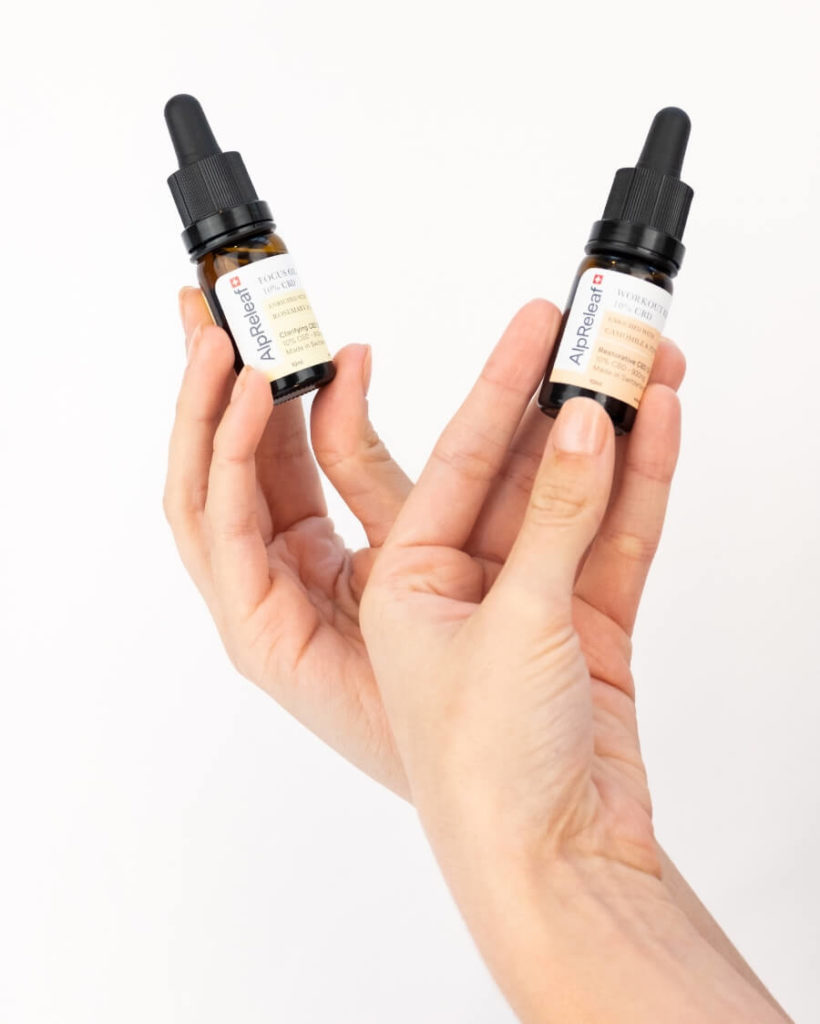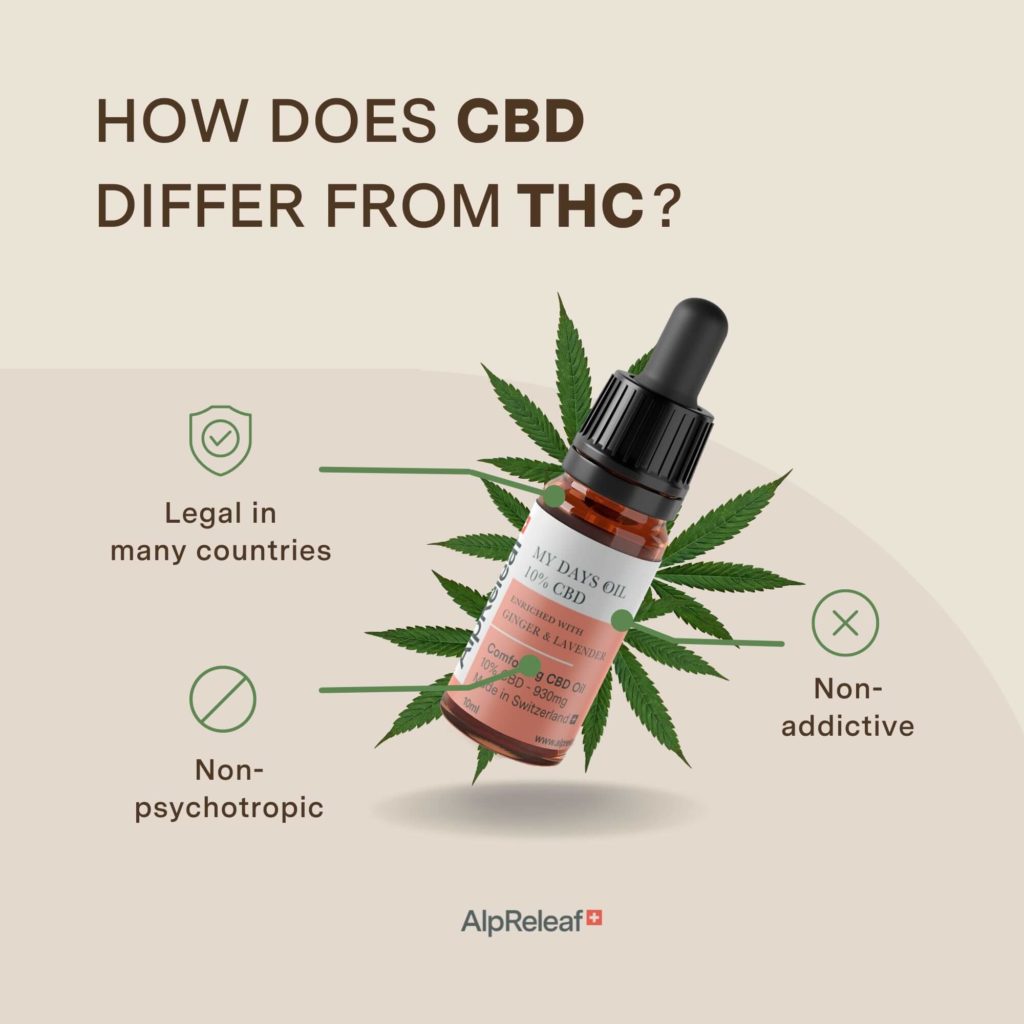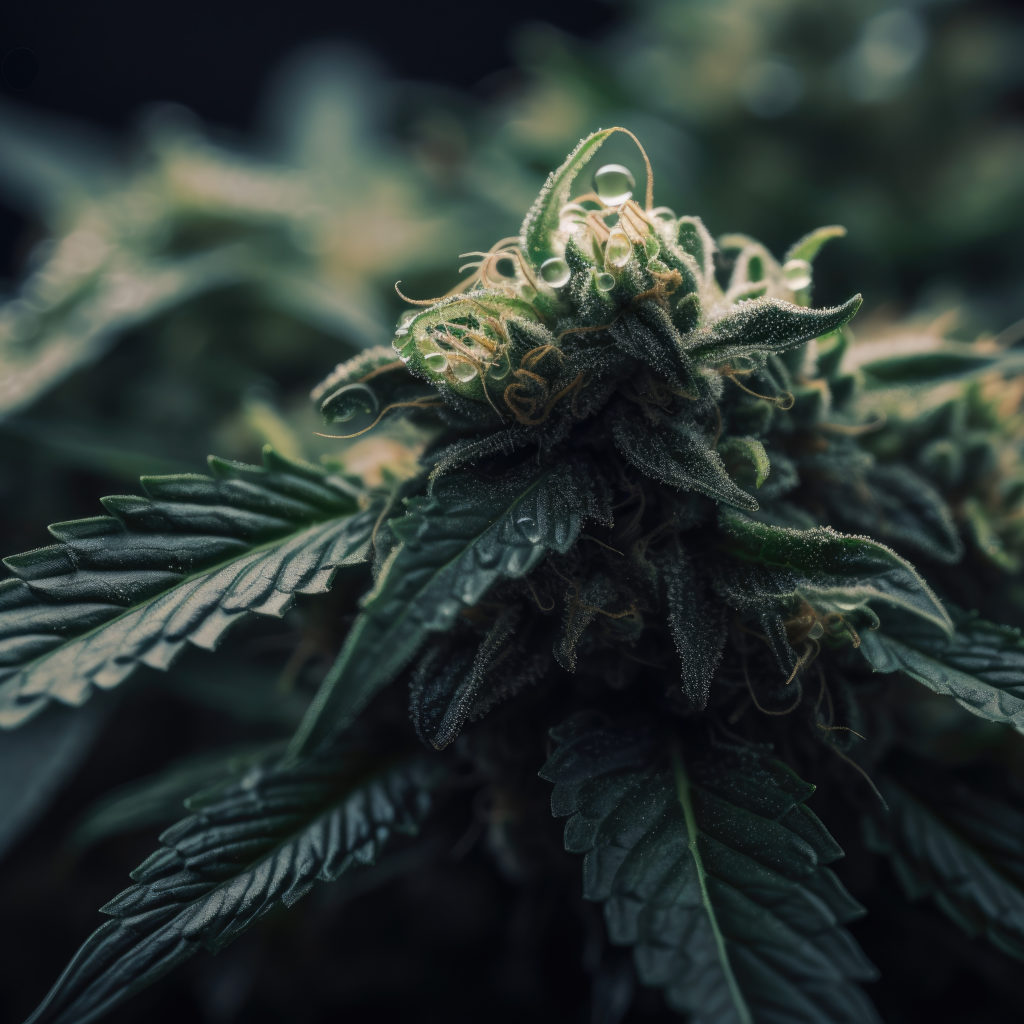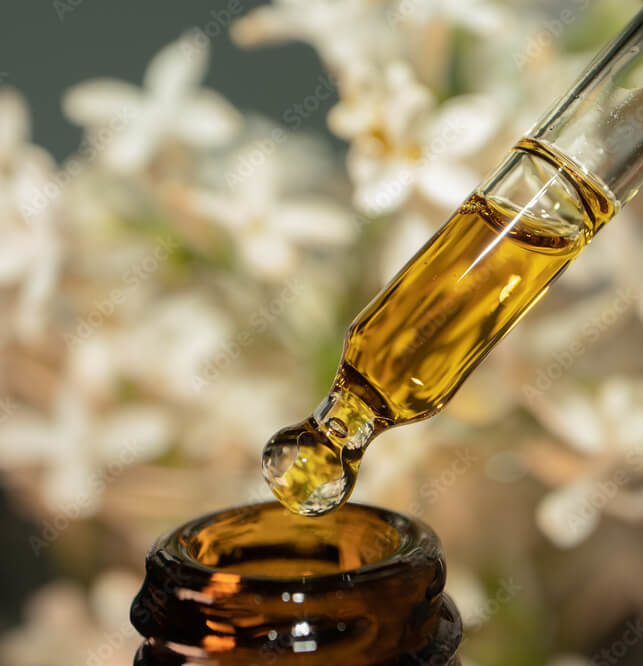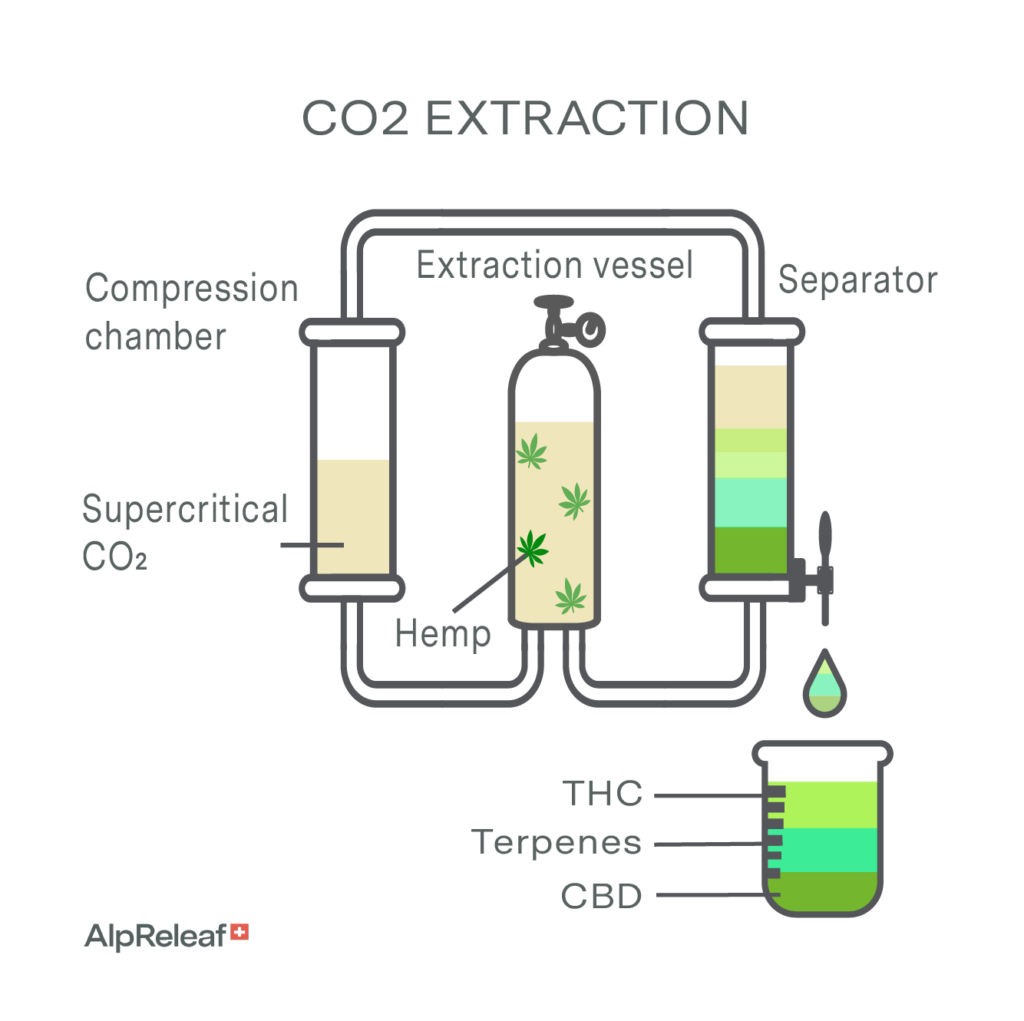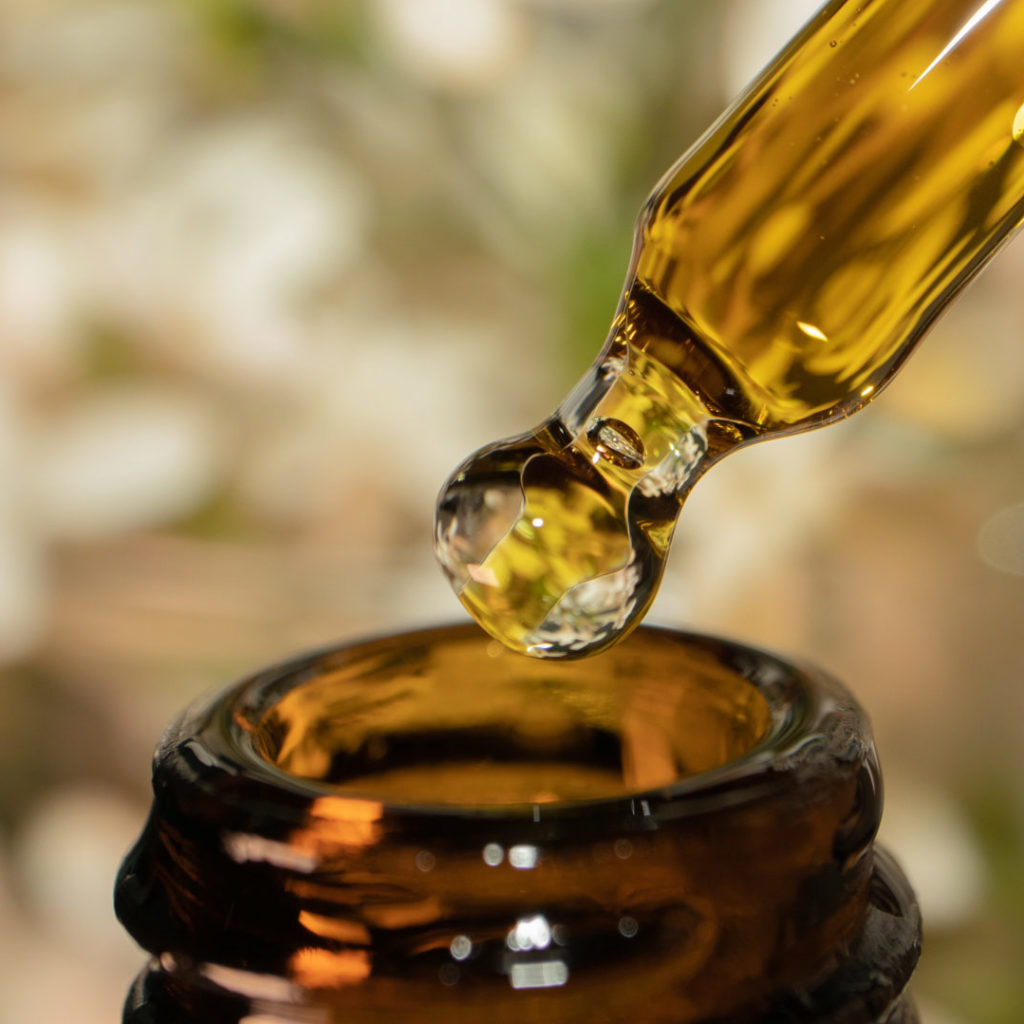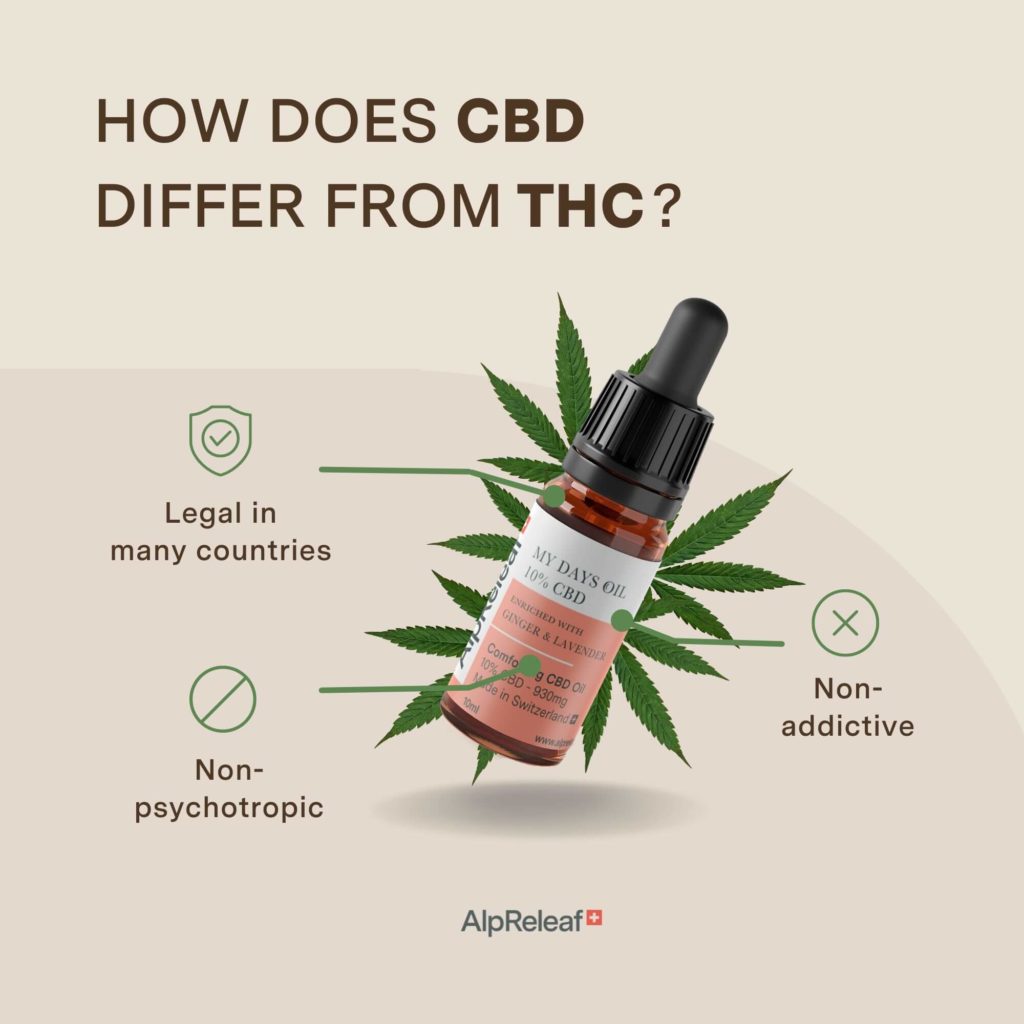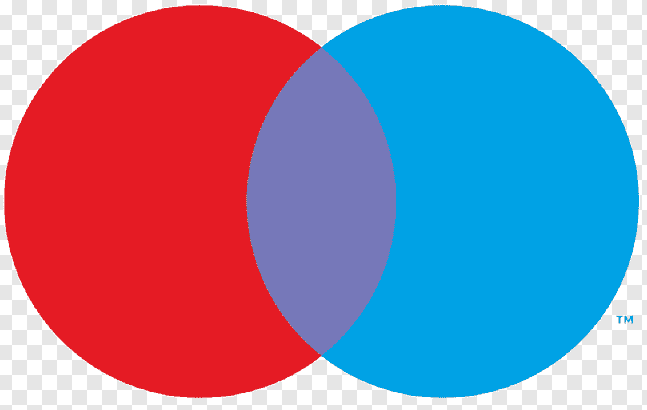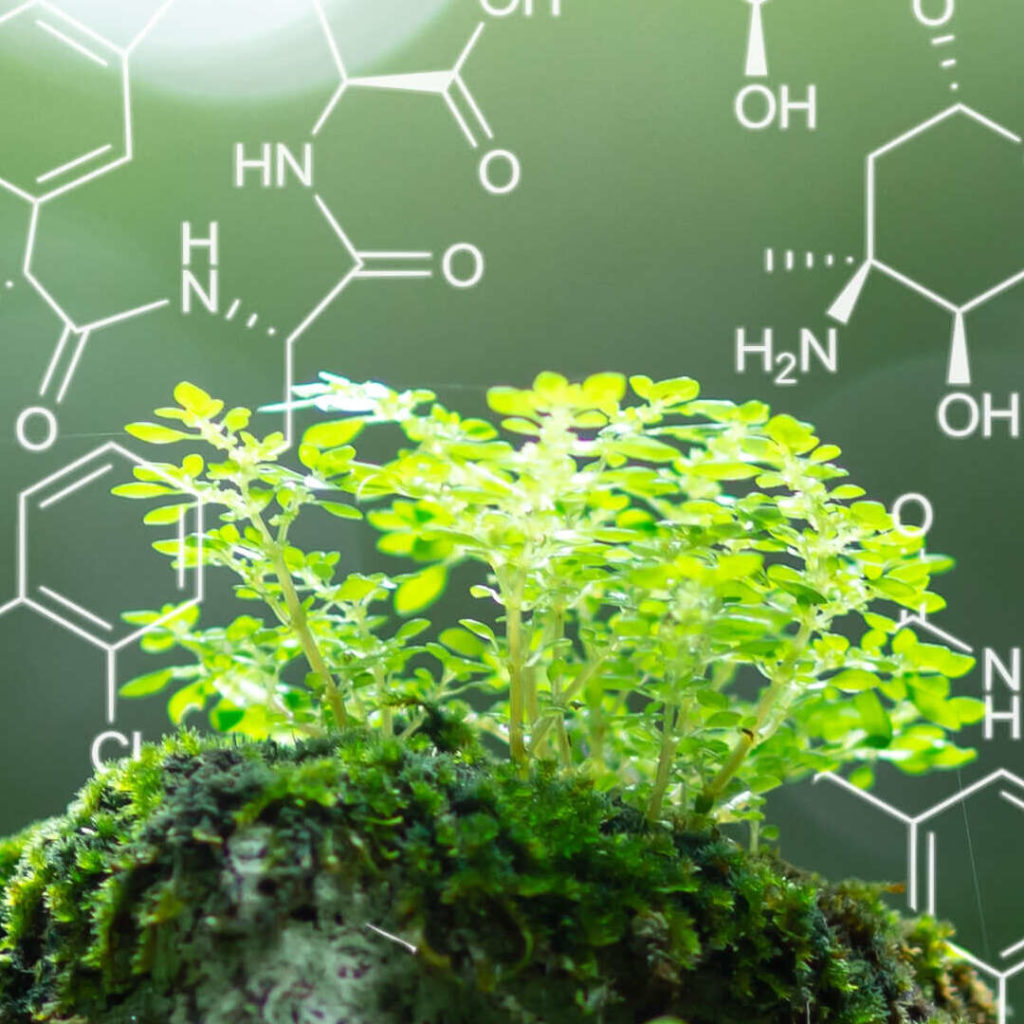
Choosing The Right CBD Product
Choosing The Right CBD Product
Differences between Full-Spectrum,
Broad-Spectrum, & Isolate
Differences between Full-Spectrum,
Broad-Spectrum, & Isolate
01.09.2023 - 4 min
One of the fascinating aspects of CBD is that it comes in different forms: broad-spectrum, full-spectrum, and isolate. These three types of extract are available in the market, each offering distinct advantages and catering to specific preferences.
Full-spectrum extract preserves the complete profile of the hemp plant, which means it contains cannabinoids, terpenes and a trace amount of THC typically within legal limits.
Very similar to full-spectrum extract, broad-spectrum extract does not contain any traces of THC. The isolate extract is the purest form of CBD, once it goes trough rigorous processes that eliminate all the other compounds
One of the fascinating aspects of CBD is that it comes in different forms: broad-spectrum, full-spectrum, and isolate. These three types of extract are available in the market, each offering distinct advantages and catering to specific preferences.
Full-spectrum extract preserves the complete profile of the hemp plant, which means it contains cannabinoids, terpenes and a trace amount of THC typically within legal limits.
Very similar to full-spectrum extract, broad-spectrum extract does not contain any traces of THC. The isolate extract is the purest form of CBD, once it goes trough rigorous processes that eliminate all the other compounds
1. FULL-SPECTRUM
CBD EXTRACT
Full-spectrum extract is derived from the hemp plant and it refers to an extract that contains all the naturally occurring compounds found in the cannabis plant, including cannabinoids, terpenes, flavonoids, and trace amounts of THC (tetrahydrocannabinol).
There are multiple ways to obtain full-spectrum CBD extract:
+ CO2 extration
+ Solvent extraction
+ Short pad CBD distillation
+Dry-iced extraction
COMPOSITION & POTENTIAL BENEFITS
As previously mentioned, full-spectrum CBD extract contains a diverse range of:
+ cannabinoids
+ terpenes
+ flavonoids
+ THC within legal limits
This combination of cannabinoids is believed to produce an entourage effect, where the compounds work together synergistically, potentially enhancing the overall benefits of the CBD.
Full-spectrum CBD extracts offer a comprehensive approach to wellness, with potential benefits for:
+managing stress
+
promoting relaxation
+
supporting overall well-being
Although full-spectrum extracts may contain minimal THC, they are typically non-psychoactive when used responsibly. Nonetheless, individuals subjected to regular drug tests should be cautious due to possible THC content triggering positive results.
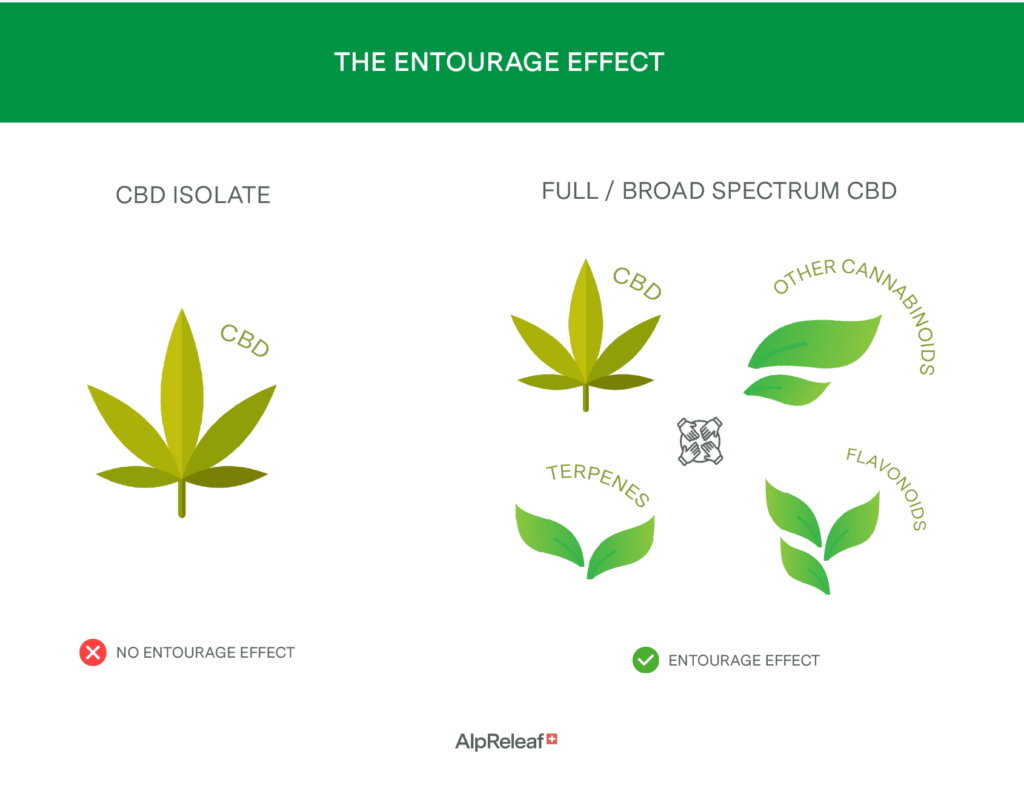
Here's a breakdown of the main differences between the three types of extracts.<
Full-spectrum
Broad-spectrum
Isolate
Composition
50% CBD, Cannabinoids, terpenes, flavonoids
80% CBD, Cannabinoids, terpenes, flavonoids
97% CBD
Entourage Effect
Yes
Possible
No
Extraction processes
CO2 Extraction or Solvent extraction
CO2 Extraction & Flash chromotography
CO2 Extraction, Filtration, Purification
Appearance
Brown/yellow/green thick paste
Orange/yellow
oily liquid
White crystal powder
*Legality (in Europe)
Legal, with THC levels varying from country to country
*CBD laws and regulations are subject to change, and it's essential to verify the most current information from official sources or legal advisors before conducting business in each country.
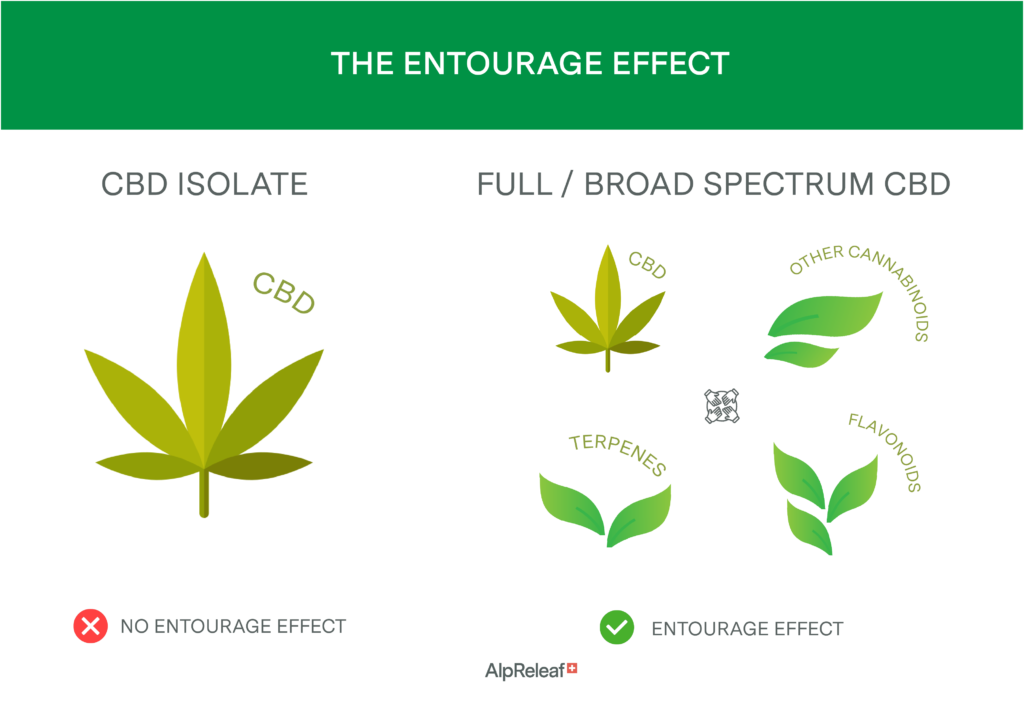
EXTRACTION METHODS
SOLVENT EXTRACTION
In this method, a solvent (such as ethanol, hydrocarbons like butane or propane ) is used to dissolve the cannabinoids and other beneficial compounds from the plant material.
The solvent is then evaporated, leaving behind a concentrated extract containing a full spectrum of cannabinoids, terpenes, flavonoids, and other plant compounds.
The advantage of solvent extraction is its cost-effectiveness in extracting a wide range of compounds from the hemp plant, resulting in a comprehensive and diverse profile of cannabinoids and other beneficial components.
However, residual solvents might remain in the final product, potentially impacting its purity. Therefore, it is essential to rigorously monitor to ensure solvent levels adhere to safety standards.
CO2 EXTRACTION
This method involves pressurizing carbon dioxide to a supercritical state, allowing targeted extraction of specific cannabinoids and terpenes. This environmentally friendly process leaves no harmful residues and preserves the natural integrity of the hemp plant's compounds. As a result, CO2 extraction
is favored for producing high-quality full-spectrum CBD extracts.
Read more in here
At AlpReleaf, we take pride in the meticulous crafting of our products, and that's why we utilize CO2 extraction.
IS COLD PRESSING USED FOR EXTRACTING FULL-SPECTRUM CBD?
Cold pressing is not suitable for extracting full-spectrum CBD because CBD oil is primarily derived from the leaves and flowers of the hemp plant, not from the seeds. Cold pressing is commonly used for seed oils, such as hemp oil, but it is not an effective method for extracting CBD oil from the plant's aerial parts, where the valuable cannabinoids and terpenes are found.
2. WHAT IS BROAD-SPECTRUM
CBD EXTRACT?
Broad-spectrum CBD is a type of CBD extract that shares similarities with full-spectrum CBD but with one key difference – it contains no detectable levels of THC. Like full-spectrum CBD, broad-spectrum also harnesses the power of various cannabinoids, terpenes, and other beneficial compounds found in the hemp plant.
Depending on the employed purification process, compounds other than THC may be removed as collateral damage. It is therefore important to use the right method in order to get the most out of the benefits that the hemp plant has to offer.
COMPOSITION & POTENTIAL BENEFITS
As mentioned earlier, if extracted gently and precisely, a broad spectrum extract is basically a full-spectrum extract without the THC. During the extraction process, certain compounds, including some that can have a bitter taste, are eliminated along with THC, resulting in a milder and more enjoyable flavor profile.
This leads many consumers to prefer broad-spectrum CBD oils over full-spectrum options, as the removal of THC also contributes to a more palatable taste.
AlpReleaf's oils are thoughtfully formulated using broad-spectrum CBD extract, meticulously crafted to harness the power of multiple cannabinoids and compounds without any THC content
EXTRACTION METHODS
There are several different techniques that can be used to extract Broad-spectrum CBD, but the most common one is the CO2 extraction.
There are several different techniques that can be used to extract Broad-spectrum CBD, but the most common one is the CO2 extraction.
FLASH CHROMATOGRAPHY
Once the CO2 extraction process is complete, an additional step is taken to refine the extract further. This step, known as flash chromatography, an advanced process we use in creating AlpReleaf's broad-spectrum CBD products.
Flash chromatography allows a rapid and efficient purification of compounds. It works by passing the CBD extract through a specialized column packed with an adsorbent material.
During this process, THC is separated from the CBD extract based on its affinity for the adsorbent material, allowing it to be selectively removed from the mixture and therefore obtaining a pure CBD extract.
FRACTIONAL DISTILLATION
Fractional distillation is a separation process used in CBD extraction. It capitalizes on the differing boiling points of cannabis compounds. After an initial full-spectrum CBD extract, controlled heating separates compounds by vaporization temperatures. These vapors are then condensed to isolate specific components, contributing to the creation of targeted CBD formulations.
It removes THC while retaining diverse cannabinoids and terpenes.
CBD Isolate is the purest form of CBD available. It is free from all other cannabinoids, terpenes, and plant compounds.
The extraction process for CBD isolate involves meticulous filtration and purification to remove all additional elements from the hemp extract, resulting in a product that is 99% pure CBD.
CBD isolate possesses the appearance of a white crystal powder, a visual representation of its pure and isolated form. This texture is the result of the thorough extraction process that isolates the CBD compound from all other elements, rendering a product that is solely composed of CBD molecules.
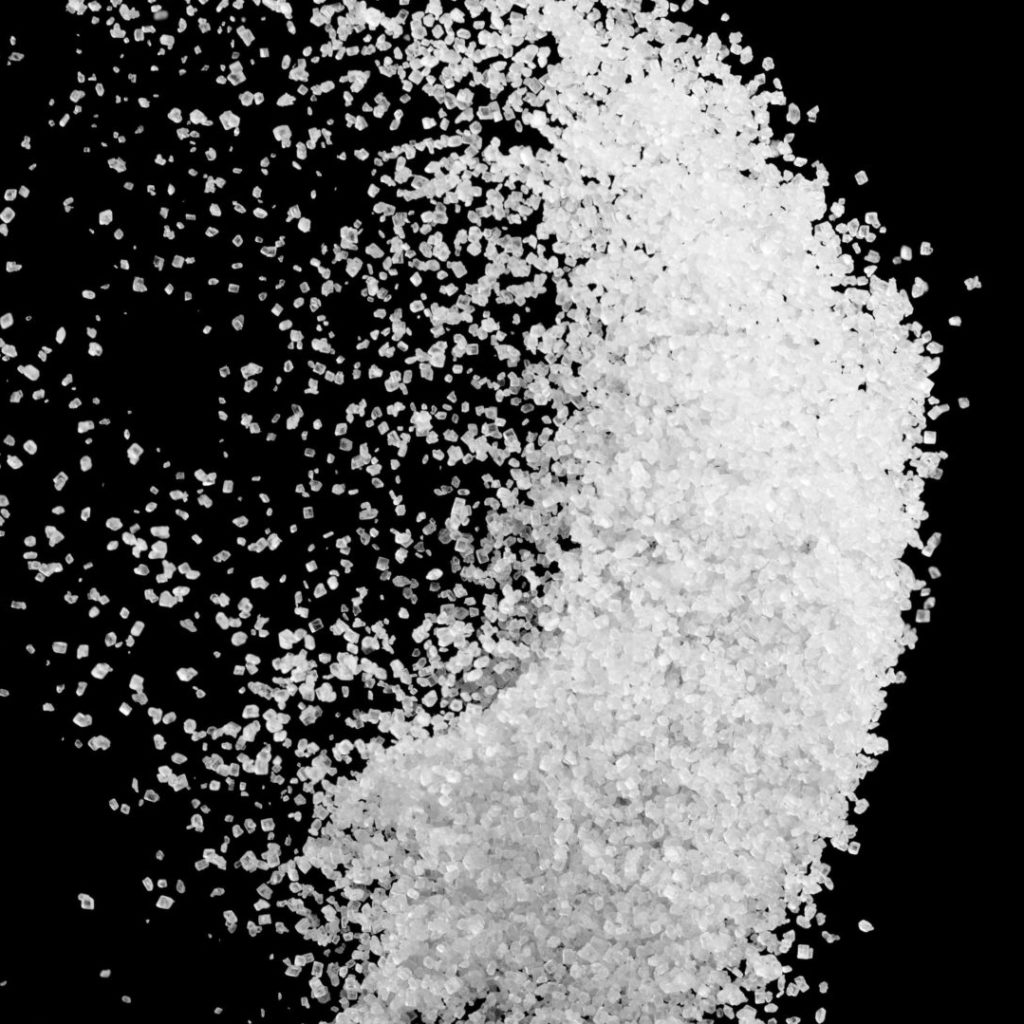
COMPOSITION & POTENTIAL BENEFITS
Isolate CBD can contain up to 99.9% of CBD, meaning it has no other cannabinoids, terpenes or any plant compounds that we might find in the broad-spectrum or full-spectrum CBD. Its neutral flavor and odorless nature make it a seamless addition to various products, from creams to oils.
While CBD isolate offers a concentrated and pure form of CBD, it might not be the most suitable choice for oil-based products. Oils tend to work best when a broader spectrum of compounds is present, including other cannabinoids and terpenes. As CBD isolate lacks these additional components, the entourage effect doesn't exist, limiting the potential benefits that oils can provide.
CBD isolate's colorless and odorless qualities make it a prime candidate for creams and topicals. Its neutral nature ensures it won't interfere with the desired appearance or scent of skincare products, providing an unobtrusive base for a wide range of cream formulations.
EXTRACTION METHODS
To obtain CBD isolate, there are several techniques that need to be done to obtain this level of pure CBD.
Unlike full spectrum and broad spectrum extracts, the extraction process for CBD isolate doesn't require the same degree of delicacy. This is because the goal is straightforward: to obtain pure CBD in its isolated form.
The absence of other compounds means that there's no need to consider preserving the delicate balance of cannabinoids and terpenes, making the extraction process more direct.The processes are:
+ Initial Extraction: CBD is extracted from the hemp plant using methods like CO2 extraction (a method that uses carbon dioxide under specific conditions to isolate cannabinoids and other beneficial compounds) or solvent extraction.
+
Winterization: The crude CBD oil is mixed with ethanol and frozen to remove unwanted plant compounds.
+ Filtration: The winterized CBD oil undergoes multiple filtration processes to further remove impurities.
+ Decarboxylation:The CBD oil may be heated to convert inactive cannabinoids into their active form.
+ Precipitation: The winterized and decarboxylated CBD oil is mixed with a solvent to create a solution, which is then cooled to induce precipitation.
+ Centrifugation or Filtration:The CBD isolate is separated from the solvent using centrifugation or filtration.
+ Drying:The isolated CBD is left to dry, removing any remaining traces of solvent.
To obtain CBD isolate, there are several techniques that need to be done to obtain this level of pure CBD.
Unlike full spectrum and broad spectrum extracts, the extraction process for CBD isolate doesn't require the same degree of delicacy. This is because the goal is straightforward: to obtain pure CBD in its isolated form.
The absence of other compounds means that there's no need to consider preserving the delicate balance of cannabinoids and terpenes, making the extraction process more direct.The processes are:
+ Initial Extraction: CBD is extracted from the hemp plant using methods like CO2 extraction (a method that uses carbon dioxide under specific conditions to isolate cannabinoids and other beneficial compounds) or solvent extraction.
+
Winterization: The crude CBD oil is mixed with ethanol and frozen to remove unwanted plant compounds.
+ Filtration: The winterized CBD oil undergoes multiple filtration processes to further remove impurities.
+ Decarboxylation:The CBD oil may be heated to convert inactive cannabinoids into their active form.
+ Precipitation: The winterized and decarboxylated CBD oil is mixed with a solvent to create a solution, which is then cooled to induce precipitation.
+ Centrifugation or Filtration:The CBD isolate is separated from the solvent using centrifugation or filtration.
+ Drying:The isolated CBD is left to dry, removing any remaining traces of solvent.
WHICH IS BEST?
If you're seeking a minimally processed CBD product straight from nature, opt for full spectrum extracts. However, be prepared for an earthy taste and potential sediment.
Exercise caution if you're an athlete or need to drive, as higher quantities might lead to certain effects. Full spectrum extracts aren't commonly used in skincare due to their scent and color, plus their lower CBD concentration (around 50%). If you choose full spectrum, opt for CO2 extracted oils to ensure better preservation.
For those desiring the entourage effect with a refined taste and no potential THC concerns, broad spectrum extracts are the choice. At AlpReleaf, we ensure the highest quality in our broad spectrum products...
CBD isolate finds its strength in creams, where minimal impact on smell and texture matters. Conversely, for oils, it lacks the entourage effect.
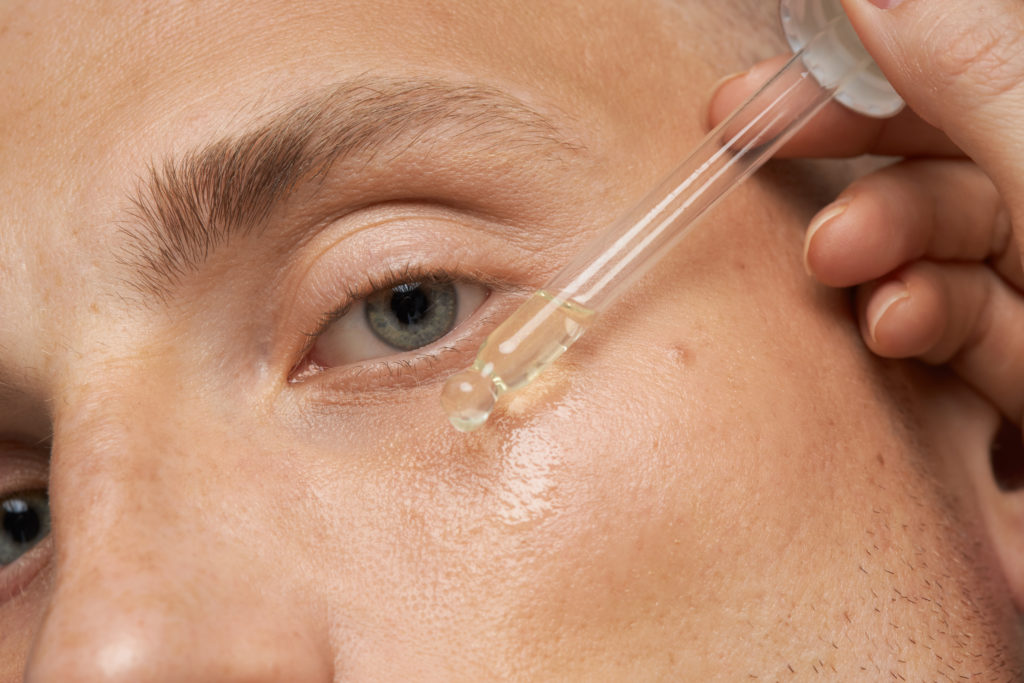

To make an informed decision, we encourage readers to consult with healthcare professionals or CBD experts before incorporating CBD into their wellness routine.
At AlpReleaf, we take pride in crafting premium CBD products that cater to our customers' unique needs and preferences. Our commitment to quality and innovation shines through in our diverse range of CBD types - broad-spectrum and isolate.
We understand that each individual may seek specific benefits from CBD, and that's why we offer options that cater to various preferences. Our Swiss-grown hemp, combined with cutting-edge extraction processes, ensures that our products are of the highest quality. We strive to maintain compliance with European regulations, and our products are formulated with your safety and well-being in mind.
READ MORE ARTICLES LIKE THIS
Subscribe to our newsletter
 visit our Swiss Shop
visit our Swiss Shop











